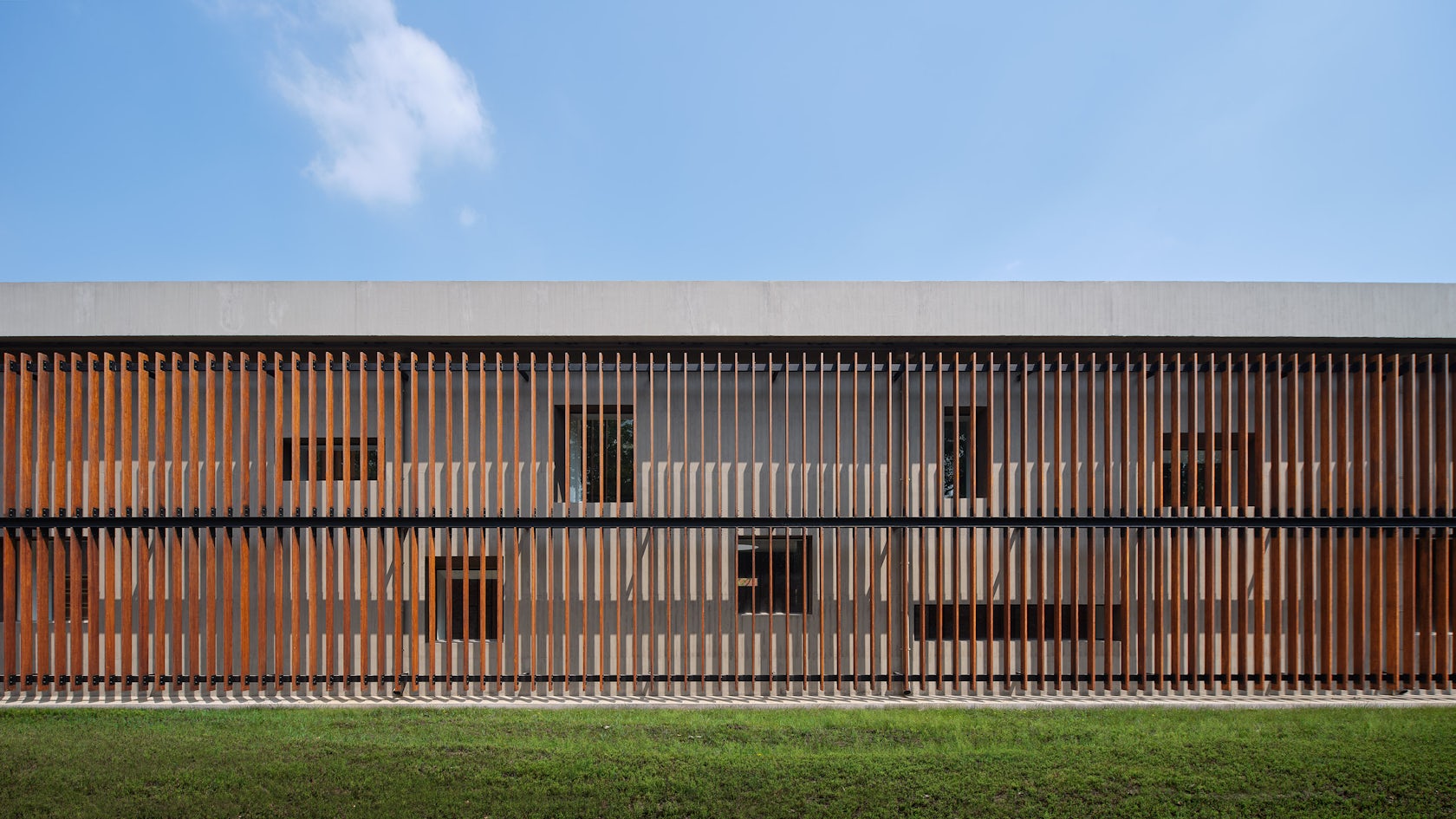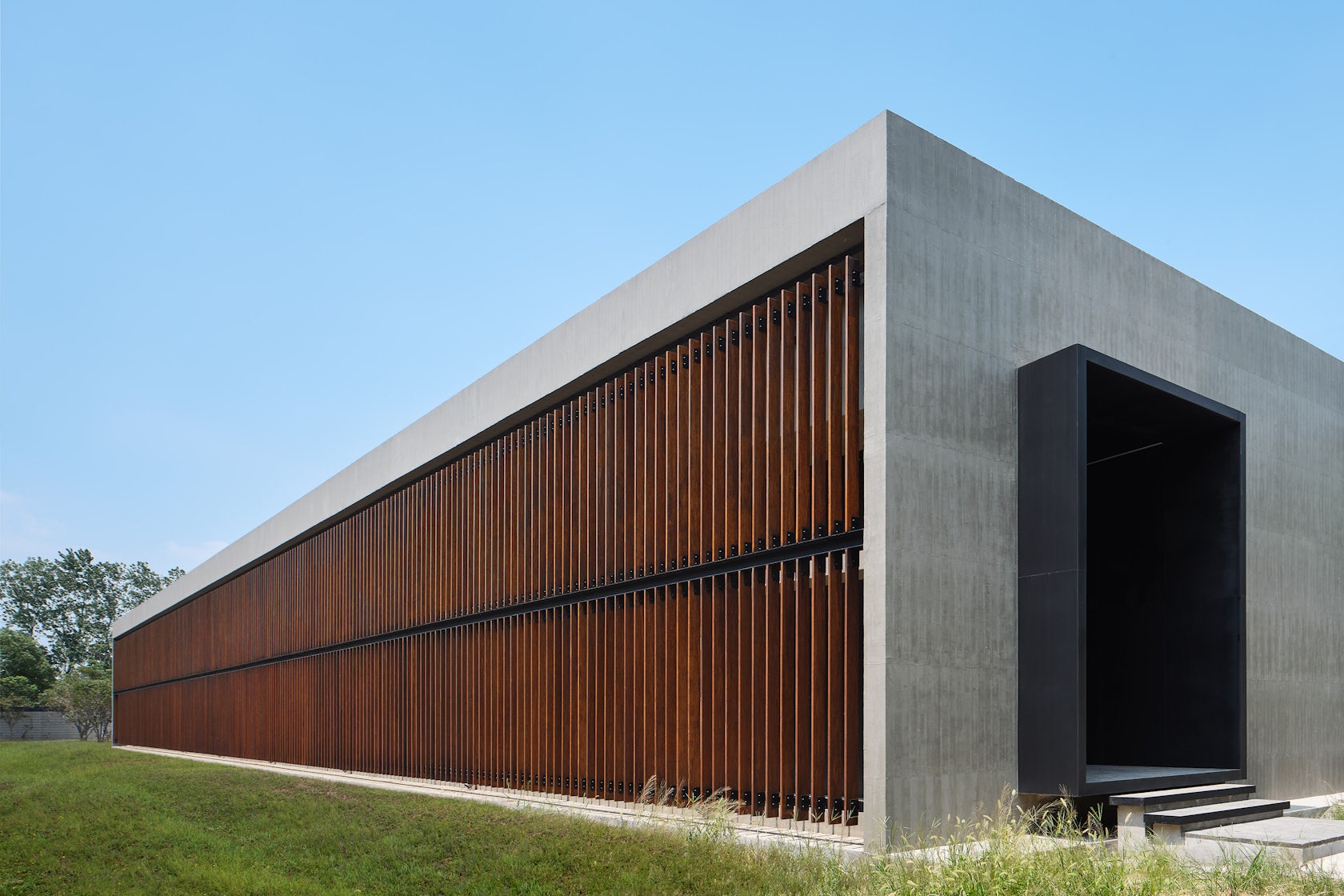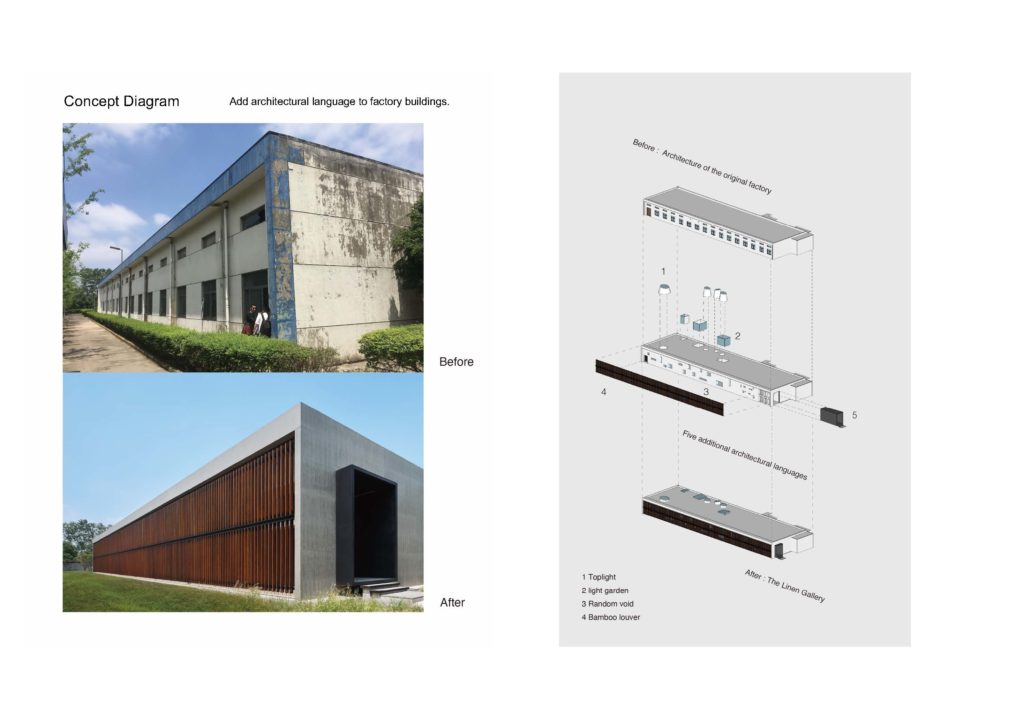The linen gallery in Zhejiang – Originally a linen factory that had not been used since the late 1980s, this space has been reclaimed as a gallery by applying multiple architectural languages. A new architecture was created by planning top lights and random void in the walls of the closed factory space, which was not illuminated by the simple RC structure, and adjusting the sunlight with louvers made of compressed bamboo on the outside.
Architizer chatted with Mitsuhiro Shoji, partner at Uchida Shanghai, to learn more about this project.
Architizer: What inspired the initial concept for your design?
Mitsuhiro Shoji: The nondescript factory architecture of the 1980s had a strength not found in recent architecture. We repeatedly examined various openings using models to see if we could bring light into the building in various ways to give it the look of a famous 20th century building. I wanted to create a primitive architectural space that resembles 20th century architecture, which has been forgotten by 21 century architecture.

© uchida shanghai

© uchida shanghai
What do you believe is the most unique or ‘standout’ component of the project?
Five new architectural language designs. Top lights, random voids, louvers, light gardens, and approach volumes. Under the influence of these languages, space was reborn and given details.

© uchida shanghai
What was the greatest design challenge you faced during the project, and how did you navigate it?
Almost all the finishing materials were made of local materials. The value placed on the quality and durability of the materials themselves, rather than on their high or low price. The space was composed of simple materials that have been used for 100 years, rather than the complex sustainability advocated by material manufacturers. The difficulty was to create a new and luxurious design by using such materials and paying attention to the proportions and colors.

© uchida shanghai
How did the context of your project — environmental, social or cultural — influence your design?
I am not aiming for a new architecture here that has never existed in the world before.
I feel the same way about other projects, but I find it boring to see the rapid shift in design toward the environment, society, and culture of today. All of them seek only speed and lack quality. I wanted to realize an architectural design with a sense of strength, not one composed of trashy materials constructed based on a bizarre concept. We also wanted to express the fact that spending a lot of money does not always produce a good product, but that quality can be achieved with time and effort. Beautiful proportions, light and shadows that change with time, and a strong spatial composition. It may seem obvious, but I wanted to release such primitive spaces to the modern world.

© uchida shanghai

© uchida shanghai
What drove the selection of materials used in the project?
The materials were selected for their authenticity, sustainability, strength, and ability to be purchased or produced locally.

© uchida shanghai
What is your favorite detail in the project and why?
Design section composed of steel plates. The spiral staircase, entrance door, and interior windows that can be divided and opened and closed. The texture of the clear-coated steel plate is expressive and beautiful, and adds depth to the highly precise design.

© uchida shanghai
How important was sustainability as a design criteria as you worked on this project?
The furniture and exterior louvers are made of compressed bamboo. From the initial design concept, we considered the possibility of using local materials to reduce the environmental impact of the interior renovation.

© uchida shanghai
In what ways did you collaborate with others, and how did that add value to the project?
Local furniture factories were selected for furniture production. They had a technique of joining furniture without nails by using hozo, which produced a difference in detail. This was the first time for us to produce a compressed bamboo louver, but we were able to complete a beautiful piece of furniture through multiple sample productions. The external compressed bamboo louvers were also finished by a furniture factory using oil fenesthetics, one piece at a time. I think that the craft-like element added depth to the project.

© uchida shanghai
Were any parts of the project dramatically altered from conception to construction, and if so, why?
Multiple colors were planned for the interior during the initial design, but as the project progressed, the current color scheme was adopted to better highlight the unique colors of the materials.

© uchida shanghai
How have your clients responded to the finished project?
The client is pleased that the former linen production site has been renovated into a gallery, leading to the next era.

© uchida shanghai

© uchida shanghai
What key lesson did you learn in the process of conceiving the project?
I felt the importance of building up sensory design studies even when there is no context in the process of proportioning. This time, we used a lot of design studies with models and sketches. Basically, a perspective spatial image was sketched and converted into a real space.
How do you believe this project represents you or your firm as a whole?
Minimalist, modern, yet powerful design is one of our design concepts. It is imbued with materiality and respect for 20th century design. This nostalgic yet new design is the very architecture I am aiming for.

How do you imagine this project influencing your work in the future?
This project, a factory renovation, was lucky enough to win several awards, and we were able to successfully incorporate materials such as bamboo, which we have studied for more than 10 years, into the design and realize it.
We believe that it is possible to construct a rich space with architectural language without using the latest technology.
I hope to have more opportunities to design and challenge new architecture from sympathetic clients.
Team Members
mitsuhiro shoji, masato kaneko, jin bin, shi luyu, willson foo, teddy shea
For more on linen gallery in Zhejiang, please visit the in-depth project page on Architizer.




































 The linen gallery in Zhejiang
The linen gallery in Zhejiang 


